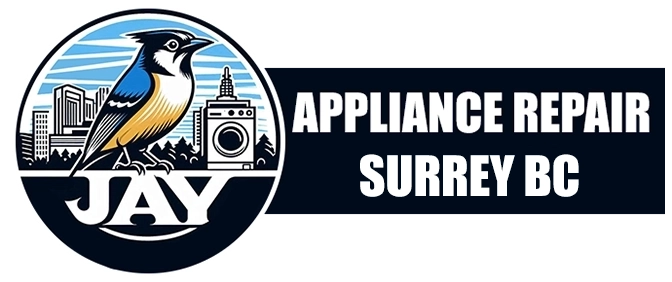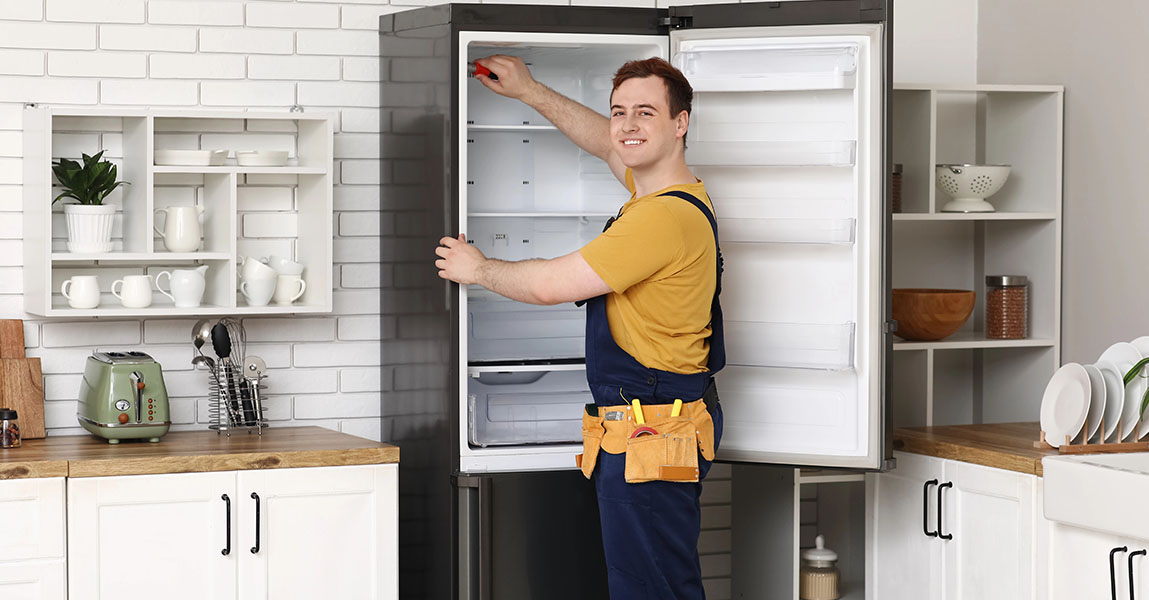Reaching into the fridge and discovering standing water under the crisper drawers is never a good feeling. We’ve seen this issue countless times, especially in Surrey homes. Water pooling inside a refrigerator is not just annoying—it can lead to food spoilage, mold, or even damage to your floors.
So why is this happening? And more importantly, what can we do about it?
Understanding the Most Common Causes of Interior Fridge Leaks
The first step to fixing a leak is knowing where the water is coming from. In most cases, leaks inside the fridge aren’t caused by a faulty door seal or a spill. They come from inside the appliance itself, typically due to a few key issues that we can walk through together.
Firstly, many fridges have a defrost cycle that melts frost off the evaporator coils. That water usually drains through a small hole at the back of the fridge. However, if the defrost drain becomes clogged with food debris or ice, the water can’t exit properly. As a result, it builds up at the bottom of the fridge.
Secondly, the issue could lie with the drain pan underneath the unit. That pan holds condensation from the cooling process. If it cracks or overflows, water may show up in strange places. In other words, it’s not always the interior mechanics failing—sometimes the leak works its way up from below.
Checking the Defrost Drain for Clogs or Ice Buildup
One of the simplest yet most overlooked reasons for water leaking inside a fridge is a clogged defrost drain. We find this all the time when handling fridge repair in Surrey.
The defrost system is supposed to melt away frost and drain the water to a pan at the base. However, if that small drain hole becomes blocked, the water can’t leave. It will start pooling inside the fridge compartment, usually underneath the bottom drawer.
To clarify, you don’t need to be a technician to take a look. You can remove the drawers and check for water at the back wall of the fridge. Use a flashlight if needed. If you see water building up in that space, the drain is probably the culprit.
You can try using a turkey baster filled with warm water to flush the drain. Sometimes a little pressure and heat are enough to clear the clog. But if the water doesn’t drain, or if it keeps coming back, we suggest scheduling appliance repair in Surrey to properly clean or thaw the line.
Inspecting the Door Seals and Interior Temperature
Another possible cause of interior leaking is condensation, especially when warm, moist air enters the fridge and causes excess moisture. That is to say, the problem might not be a clogged drain at all—it might be your door gasket.
We often see door seals that are no longer airtight. When that happens, warm air sneaks in, mixes with the cold air, and produces condensation that drips onto the shelves or pools under drawers. Consequently, it appears like a leak, but it’s really about airflow.
To check this yourself, close the door on a piece of paper and try to pull it out. If it slips out easily, the gasket might need cleaning or replacing.
In addition, make sure your fridge is maintaining a proper temperature. If it’s too warm, it won’t keep moisture levels in check. We recommend keeping your fridge at around 4°C and your freezer at about -18°C. An accurate thermometer can help confirm this.
Cracked or Overflowing Drain Pan Underneath
While most leaks come from inside the fridge, don’t ignore the base of the appliance. There is a drain pan beneath the unit designed to catch water during defrost cycles. Under normal conditions, the water should evaporate on its own.
However, if the pan is cracked or has shifted out of place, water may drip onto the floor or somehow back up into the appliance. This is especially true in older models or units with damaged insulation.
To access the drain pan, carefully remove the lower grille or kick plate and use a flashlight to peek underneath. Check if the pan is sitting properly and whether it’s full or dirty. If you find mold or an unpleasant smell, you’ve likely found the problem.
Cleaning the pan with mild soap and water may fix the issue, but if it’s cracked, replacement is necessary. If you’re unsure how to proceed or if you can’t access it safely, don’t hesitate to reach out for appliance repair in Surrey.
Overflowing or Misaligned Ice Maker and Water Dispenser
If your fridge has a built-in ice maker or water dispenser, they could also be the source of a mysterious leak. When these features stop working correctly, they can overflow or leak slowly into the fridge compartments.
We’ve noticed that many ice makers become slightly misaligned or overfill trays, spilling water in areas that aren’t designed to handle it. Similarly, if the water line to the dispenser is kinked, loose, or frozen, it might lead to a small leak that’s hard to spot at first.
Try checking the ice maker tray for overfilling or signs of ice blockages. Then, follow the water line from the dispenser to ensure it’s securely connected and free of damage. If you notice dampness around the tubing or behind the fridge, there may be a hidden problem.
These parts are best handled with care. If you’re uncomfortable removing panels or hoses, it may be time to contact us for help. We can diagnose and correct issues with built-in features safely and effectively.
Bonus Tip: Avoid Overstuffing the Fridge
Here’s something many people overlook—how packed your fridge is can also affect moisture control. If your fridge is stuffed wall to wall, it blocks the natural airflow and makes it harder for the cooling system to regulate humidity.
That poor airflow can lead to condensation forming inside the fridge, especially in corners or under drawers. In the long run, it might not only cause puddles but also force your fridge to work harder, increasing energy bills.
We suggest organizing food in a way that leaves space between items and keeps vents clear. Likewise, don’t stack containers directly against the back wall where cold air exits. It’s a small habit that can make a big difference.
When to Call in Help for Leaking Fridges
You can try the DIY solutions above, and many of them will fix minor issues. However, if the problem keeps returning or if water is causing visible damage inside or outside your fridge, it’s time to bring in help.
Leaks that persist may point to electrical problems in the defrost system, internal blockages, or failing components. We handle complex diagnostics as part of our fridge repair in Surrey service and can help ensure your appliance runs reliably again.
More importantly, persistent water buildup can encourage mold growth or damage your cabinets and flooring. Addressing the issue quickly gives you peace of mind and prevents bigger repair bills later on.
If your fridge is leaking and you’re not sure what to do next, don’t wait. We encourage you to contact us for a fast appointment. We’ll get to the root of the problem and guide you through the right fix.
Frequently Asked Questions
Why is there always water under my fridge drawers?
This usually means the defrost drain is blocked. When it clogs, water from the defrost cycle has nowhere to go and collects at the bottom of the fridge.
Can a fridge leak water from a cracked drain pan?
Yes, a damaged or misaligned drain pan can cause leaks on the floor or even lead to water seeping back into the fridge. It’s worth inspecting if you notice water beneath the appliance.
Is condensation in a fridge normal?
A small amount is fine, but heavy condensation is not. It often means the door isn’t sealing properly or the temperature is too warm, allowing excess moisture to build up inside.
What temperature should I set my fridge to avoid leaks?
Keep your fridge around 4°C. Warmer settings can lead to more condensation, while colder settings won’t solve drainage issues if the drain is already blocked.
How can I prevent future leaks inside the fridge?
Clean the defrost drain regularly, check the door seals, avoid overpacking the fridge, and monitor built-in water features. Small checks can help avoid big problems.

